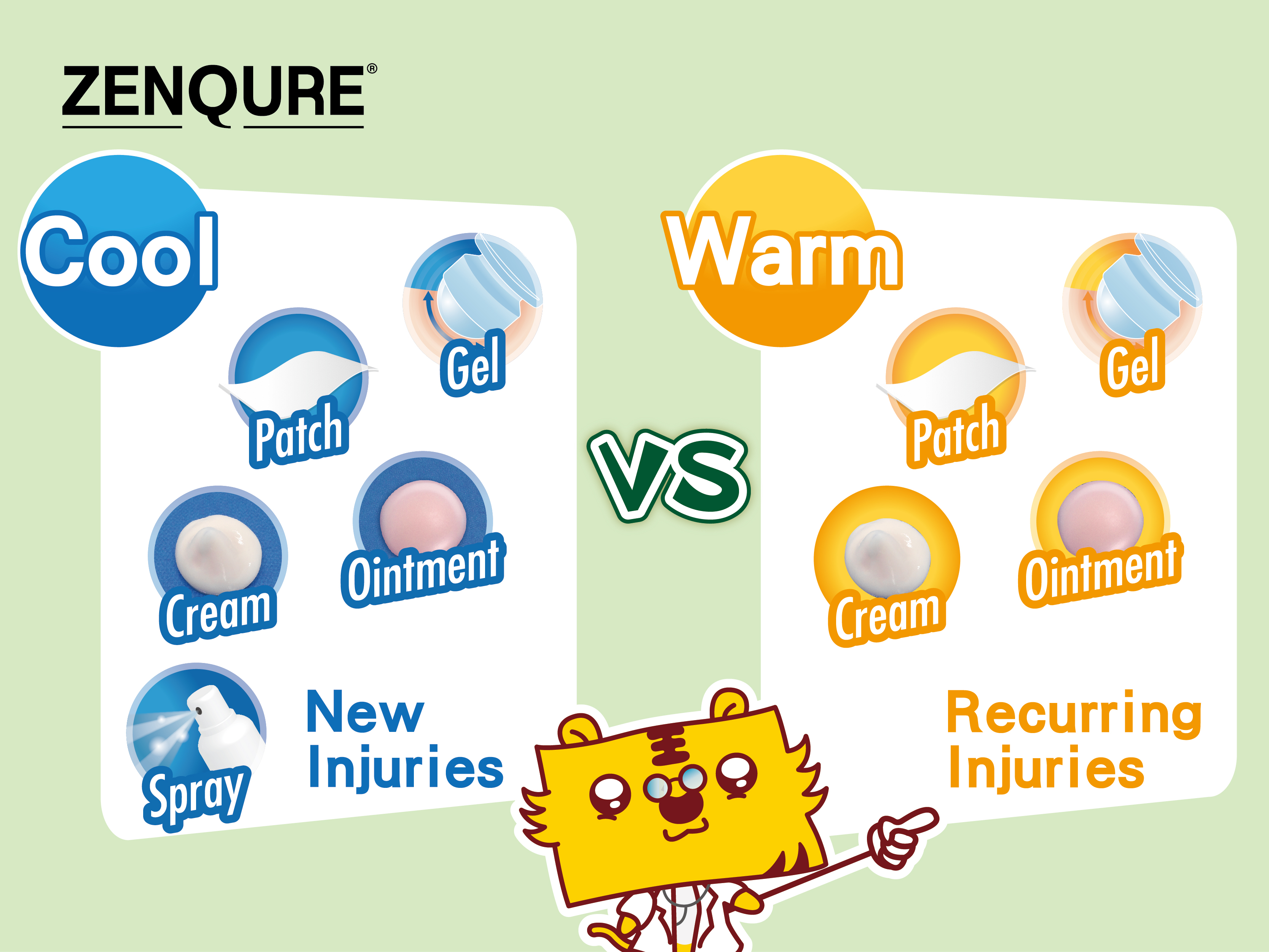Recurring Soreness in You Body? You May Be Overlooking the Truth Behind Muscle Discomfort

“My shoulder is so sore I can barely lift my arm.” “My lower back is so sore and feels like it’s about to snap.” “My legs are so sore they might just run away on their own!”
Sound familiar? Many people describe these sensations after a long day of work or a workout as “soreness” or “pain.” But some are keenly aware: “It’s not pain—it’s soreness.” “I took painkillers, but the soreness didn’t go away.”That’s right, your body may be sending out two entirely different distress signals. Recent research reveals that soreness and pain are fundamentally different sensations—and traditional herbal medicine may offer an answer.
Science Confirms: Soreness and Pain Come From Separate Neural Pathways
A groundbreaking study led by Professor Chih-Cheng Chen from Academia Sinica, published in the prestigious journal Science Advances under the title “A role for proprioceptors in sngception,” reveals that the sensations of soreness (sngception) and pain (nociception) arise from completely different neural mechanisms.
According to the study, soreness is transmitted by proprioceptors—sensory neurons responsible for detecting body position, muscle tension, and balance. When muscles become overly fatigued or acidic due to overuse or metabolic stress, certain receptors within these proprioceptors (such as the ASIC3 channel) are activated, leading to a lingering feeling of soreness. This mechanism is entirely distinct from the one responsible for acute pain, explaining why typical painkillers often fail to relieve soreness.
In clinical trials, muscle acidification was shown to cause soreness—but not pain—proving the two sensations can be completely separated. One case involved a patient with spinal cord injury who had lost all deep pain, touch, and temperature sensations in one leg, yet retained full motor function and proprioception. Remarkably, he still experienced a sore sensation (sng) when pressure was applied to his muscles. This suggests that muscle soreness and pain are distinct sensations. In this unique case, the soreness may be detected by a specialized subtype of sensory neurons—or possibly transmitted through proprioceptive nerves. As a result, the research team proposed a new term: “Sngception”, derived from the Taiwanese word for soreness, “sng,” to describe this distinct sensory pathway.
What This Means:
✔ Soreness is a unique sensation, distinct from pain
✔ Painkillers may not relieve soreness
✔ Chronic soreness may require a new approach
Ancient Chinese Wisdom: Targeting Soreness Through Qi and Blood Regulation
Traditional Chinese Medicine (TCM) has long classified discomfort into categories like soreness, numbness, swelling, and pain, each with specific treatments. Soreness is often seen as a result of blocked Qi (vital energy) and stagnant blood flow. To relieve it, ancient formulas focus on promoting circulation, relaxing tendons, and unblocking the meridians. Cheng Kuang formulates its herbal product series based on traditional Chinese medicine principles that promote blood circulation and relieve channel blockages, especially effective for relieving chronic soreness and are derived from time-honored topical formulas used in injury treatment. To meet diverse needs, it includes both cooling and warming sensation, as well as various formats such as roll-on essential oil creams, gels, liniments, and sprays—offering comprehensive and thoughtful solutions for different types of discomfort.
Cheng Kuang formulates its herbal product series based on traditional Chinese medicine principles that promote blood circulation and relieve channel blockages, especially effective for relieving chronic soreness and are derived from time-honored topical formulas used in injury treatment. To meet diverse needs, it includes both cooling and warming sensation, as well as various formats such as roll-on essential oil creams, gels, liniments, and sprays—offering comprehensive and thoughtful solutions for different types of discomfort. Cooling Herbal Series are designed for acute muscle and joint soreness or fresh injuries accompanied by redness, swelling, and heat. They help relax muscles and tendons, reduce swelling, dissolve stagnation, and promote circulation. With the long-lasting cool sensation of natural mint, they effectively soothe post-exercise soreness, bruises, sprains, strains, fatigue, muscle aches, stiff necks, shoulder tension, and musculoskeletal discomfort. When applied to the affected area, the excellent skin permeability allows the active ingredients to penetrate deep into muscles and joints, quickly easing pain and stiffness.
Cooling Herbal Series are designed for acute muscle and joint soreness or fresh injuries accompanied by redness, swelling, and heat. They help relax muscles and tendons, reduce swelling, dissolve stagnation, and promote circulation. With the long-lasting cool sensation of natural mint, they effectively soothe post-exercise soreness, bruises, sprains, strains, fatigue, muscle aches, stiff necks, shoulder tension, and musculoskeletal discomfort. When applied to the affected area, the excellent skin permeability allows the active ingredients to penetrate deep into muscles and joints, quickly easing pain and stiffness.
Warming Herbal Series add ingredients that invigorate blood and dispel stasis. They target chronic soreness, old injuries, and muscle strain caused by prolonged blood and qi stagnation. These products help regulate qi, improve circulation, reduce swelling and pain, dispel wind and dampness, warm the meridians, and unblock channels. They are especially effective for soreness due to prolonged sitting or standing, old sports injuries, cold-induced joint pain, athlete’s foot-related aches, muscular strains, rheumatic discomfort, muscle fatigue, cramps, lower back pain, and both superficial and deep-seated joint pain—new or old.
✅ A Reminder for Those Living With Soreness:
If your muscles feel sore but not painful, it may be sngception—your body asking for support, not suppression.
Warm compresses, massage, physical therapy, or using Cheng Kuang Herbal Products may help reduce soreness and restore comfort.
Soreness Is a Warning Sign—Not Just a Minor Issue
Modern life often leads to chronic muscle tension from prolonged sitting, overwork, or poor posture. Many people complain of sore shoulders, tight backs, or feeling tired all day - symptoms that may not be classic“pain”, but still debilitating. Addressing them solely through conventional pain relief methods may offer only temporary relief without resolving the root causes.
The latest science reminds us that a new perspective and strategy is needed. Cheng Kuang’s Herbal Products represent the modernization of time-tested remedies, backed by both tradition and emerging science.
This latest scientific insight also suggests that soreness may require a different perspective and treatment approach. As a modernized formulation rooted in traditional Chinese medicine, Cheng Kuang‘s Herbal Products offers an evidence-informed complementary option. Next time soreness strikes, consider moving beyond pain relief toward soothing and restoring balance.
At Cheng Kuang, we believe that true care isn't about suppressing symptoms, but about listening to the body's signals and using the right approach to release soreness at its root.
----------
Source: A role for proprioceptors in sngception | Science Advances
